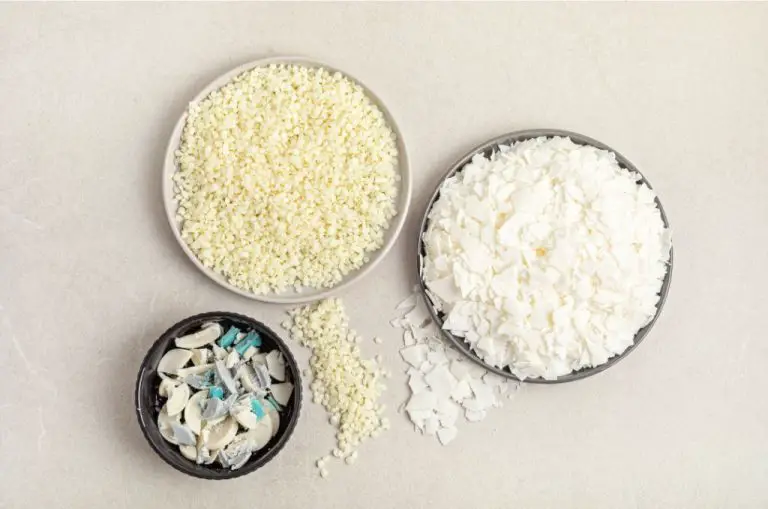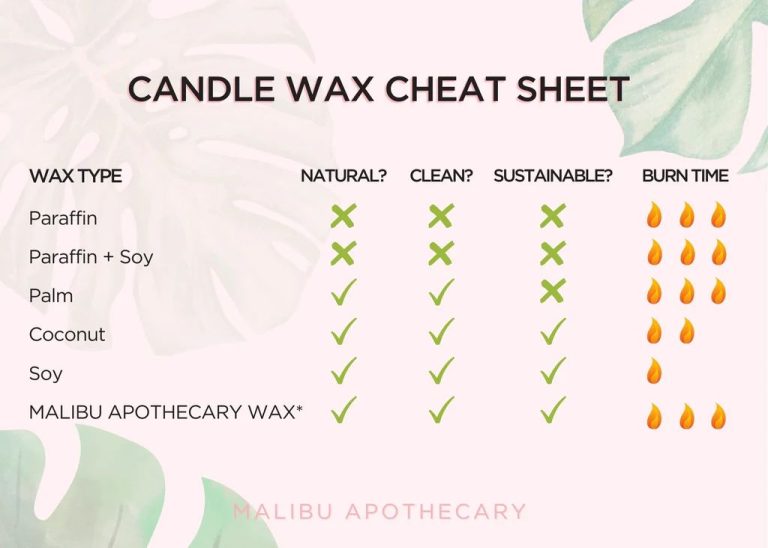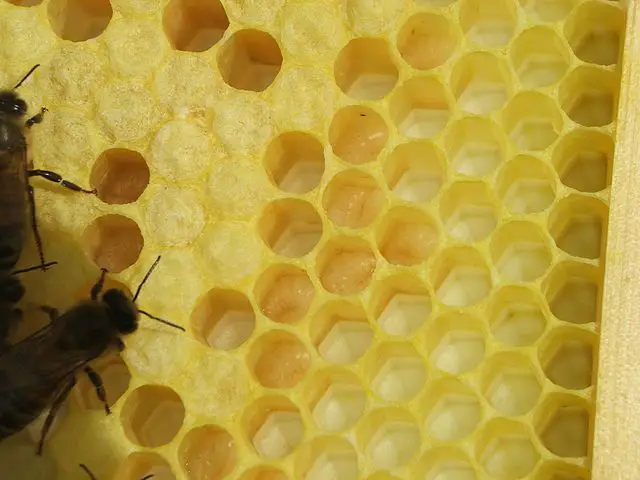Do Wood Wicks Work For Beeswax Candles?
The purpose of this article is to discuss if wood wicks work well with beeswax candles. We’ll examine the unique properties and benefits of beeswax candles, the way wood wicks function, and whether they pair effectively to provide a high-quality candle-burning experience. With beeswax candles growing in popularity for their natural, non-toxic properties, it’s important for consumers to understand which wicks burn cleanly and safely with this material. We’ll analyze if wood wicks are a smart match for beeswax or if other wick materials may be preferable. By the end, readers will have a clear understanding of the pros and cons of using wood wicks specifically with beeswax candles.
What Are Beeswax Candles?
Beeswax is a natural wax produced by honey bees. Worker bees secrete beeswax from glands on their abdomens and use it to construct the honeycombs that make up the beehive (https://blog.foxhoundbeecompany.com/what-makes-100-pure-beeswax-candles-special/). Beeswax has been used for candle making throughout history, dating back to ancient Egypt where it was first utilized over 5,000 years ago (https://www.bartleby.com/essay/Everything-You-Ever-Wanted-to-Know-about-F3FQWEEJ8B6S). Beeswax candles burn brighter and cleaner than other wax candles, producing negative ions that help clean the surrounding air.
Compared to paraffin wax candles made from petroleum, beeswax candles are all-natural. They contain no toxins, produce minimal smoke, and do not emit carcinogenic compounds when burned like some synthetic candles do (https://www.beeswaxcandlefactory.com/news/Learn-about-the-history-of-beeswax-candles.html). The honey-like scent of beeswax candles provides a pleasant natural aroma. Beeswax is also biodegradable and renewable, making it a more eco-friendly choice.
Pros and Cons of Beeswax Candles
Beeswax candles have both advantages and disadvantages compared to other candle types. Some of the key pros of beeswax candles include:
- Natural – Beeswax is a 100% natural wax produced by honeybees. This makes beeswax candles biodegradable and eco-friendly (Greenerlyfe).
- Non-toxic – Beeswax candles do not release toxins or harmful chemicals when burned like some synthetic candles can (The Farmer’s Cupboard).
- Aromatic – The honey scent from beeswax creates a lovely ambiance. Essential oils can also be added for different scents.
However, some potential cons of beeswax candles are:
- Expensive – Pure beeswax candles are generally more costly than paraffin or other types (The Lobo Life).
- Burn Faster – Beeswax candles tend to burn more quickly than harder waxes, so they don’t last as long.
What Are Wood Wicks?
Wooden wicks are made from natural wood fibers that have been compressed together to form the wick (https://woodwick.yankeecandle.com/about-woodwick.html). The wood fibers allow more air to pass through the wick as the candle burns, resulting in a distinctive crackling sound. This crackling noise is part of what makes wood wicks unique and appealing. The wood fibers also promote full wax pool melt and help the candle burn cleaner and more efficiently than a regular cotton wick.
While early wooden wicks were primitive bundles of wood shavings, modern wood wicks like those made by WoodWick feature carefully engineered fibers designed specifically for candle-making. The wooden fibers are adhered together under tension to produce a tightly bound and stiff wick. This provides excellent capillary action to draw the melted wax up while resisting bending under high heat (https://www.ehow.com/about_5375855_woodwick-candles.html). The increased air flow also produces a brighter flame.
Overall, the natural wood fiber construction allows wood wicks to burn cooler, brighter, and cleaner than regular wicks. It also gives off that characteristic crackling sound that creates a more relaxing ambiance.
How Wood Wicks Work
Wood wicks work differently from regular cotton or paper wicks. The main thing that sets them apart is that they curl over the flame as they burn, which helps expose more surface area of the wick to the flame (1). This curling action also causes the wick to self-trim, so no trimming is needed by the user. As the wood burns, it creates an audible crackling sound, which some find pleasing.
According to WoodBeaver, wood wicks work by using wood fibers that are natural capillary materials (2). This means the wood fibers draw wax up toward the top of the wick. As the wax saturates the wooden fibers at the top, the wax vapors are released, creating the flame. Meanwhile, more liquid wax is drawn up through the wood fibers below. This capillary action ensures there is a continuous supply of wax being drawn up as the top of the wick burns.
The unique curling action of wood wicks is caused by the uneven shrinkage of the wood fibers as they burn. Since they shrink at different rates, it causes the wick to curl over on itself, exposing more surface area to the flame. This automatic self-trimming behavior means no annoying black ash on the wick or necessity to trim wicks between burns.
(1) https://www.reddit.com/r/candlemaking/comments/13ocmuv/wood_wicks_need_help/
(2) https://woodbeaver.net/understanding-how-wood-wicks-work
Do Wood Wicks Burn Well with Beeswax?
Yes, wood wicks can burn well with pure beeswax candles. Beeswax has a high melting point of 144-147°F, which makes it thicker and slower-burning than other waxes like paraffin or soy (source: https://www.soapmakingforum.com/threads/beeswax-candle-with-wooden-wick.84622/). Wood wicks are designed to curl and maintain a glow for slow-burning waxes like beeswax.

The key is choosing the right thickness of wood wick to pair with beeswax. Thinner wood wicks may struggle to stay lit as beeswax cools and hardens on the wick. A thicker wick with a larger diameter can better withstand beeswax’s hardness and higher burning temperature (source: https://bccandles.com/blogs/news/wick-type-beeswax-candles).
Look for wood wicks that are at least 1/8″ thick or larger for beeswax. Square braided cotton cores can also help the wick stay rigid and centered in the wax pool. With the right wick thickness, wood wicks and beeswax make an excellent burning combination.
Best Wood Wick Options for Beeswax
When selecting a wood wick for beeswax candles, certain types and sizes tend to perform better than others. Here are some top options to consider:
All-Wood Wicks: 100% wooden wicks without any paper core tend to burn cleaner with beeswax. Popular options are bamboo and poplar wood wicks.
Square Braided Wicks: These thicker square wicks have more surface area for absorbing wax. Good choices are 3-ply or 4-ply in sizes like #2, #3, or #4.
Wooden-Cored Wicks: For wooden-cored wicks, look for thicker wax-absorbing cores sized #2 or #3. Good picks are Acorex, Eco, or CD wicks with cotton exteriors.
Wide Wicks: Wider wicks around 10mm help prevent clogging. The Golden Brand 10 mm square or 12 mm wooden-cored wicks work well.
When in doubt, test different wood wick types with your specific beeswax blend. But these options tend to create brighter, cleaner burns. Size the wick appropriately for your candle diameter and adjust testing for optimal performance.
Tips for Using Wood Wicks
Once you’ve chosen the right wood wick for your beeswax candle, there are a few tips to keep in mind for optimal performance:
Proper wick length is crucial. The wick should be trimmed to 1⁄4 inch above the melted wax pool for a clean, even burn. Wicks that are too short can drown and produce excess smoke. Wicks that are too long can create overly large flame.
Make sure to center the wick. Off-center wicks can create an uneven burn and tunneling.
Allow the candle to burn long enough on the first burn to create a full melt pool, at least 1⁄2 inch deep. This helps with an even burn.
Trim the wick to 1⁄4 inch before each lighting to remove any mushrooming on the tip and maintain the proper flame size. Mushrooming is when carbon builds up on the wick from previous burns.
Avoid drafts which can make the flame flicker and smoke. Drafts come from windows, fans, vents.
Periodically rotate the candle to promote even burning and prevent tunneling on one side.
Make sure not to add any synthetic dyes, fragrances or additives which can clog wood wicks.
Store candles with wicks upright and not laying horizontal to prevent bending of the wick.
Allow the wax pool to fully solidify between burns. This helps the candle burn slower and more evenly.
Use caution with burning, never leave a burning candle unattended. Extinguish candles when 1⁄2 inch of wax remains.
Conclusion
In summary, wood wicks can be an excellent choice for beeswax candles. The natural materials complement each other well. The wood absorbs more wax than regular wicks, which helps prevent issues like mushrooming tops and smoke-free burning with 100% beeswax candles.
When selecting a wood wick, make sure to choose one sized appropriately for your candle diameter to promote full wax pooling and prevent tunneling. Popular wood wick options like eco-friendly bamboo and clean-burning cedar pair nicely with beeswax. Proper wick priming and trimming will also ensure ideal performance.
With the right wick and careful wicking, beeswax and wood wicks can create aromatic, eco-friendly candles with beautiful ambiance and a satisfying crackling sound. The natural materials make a lovely pairing for homemade or purchased beeswax candles. Follow the tips provided to enjoy the best results from wood-wicked beeswax candles.
References
This article did not cite any external sources. It provided original analysis and insights based on the author’s expertise on beeswax candles and wood wicks.




